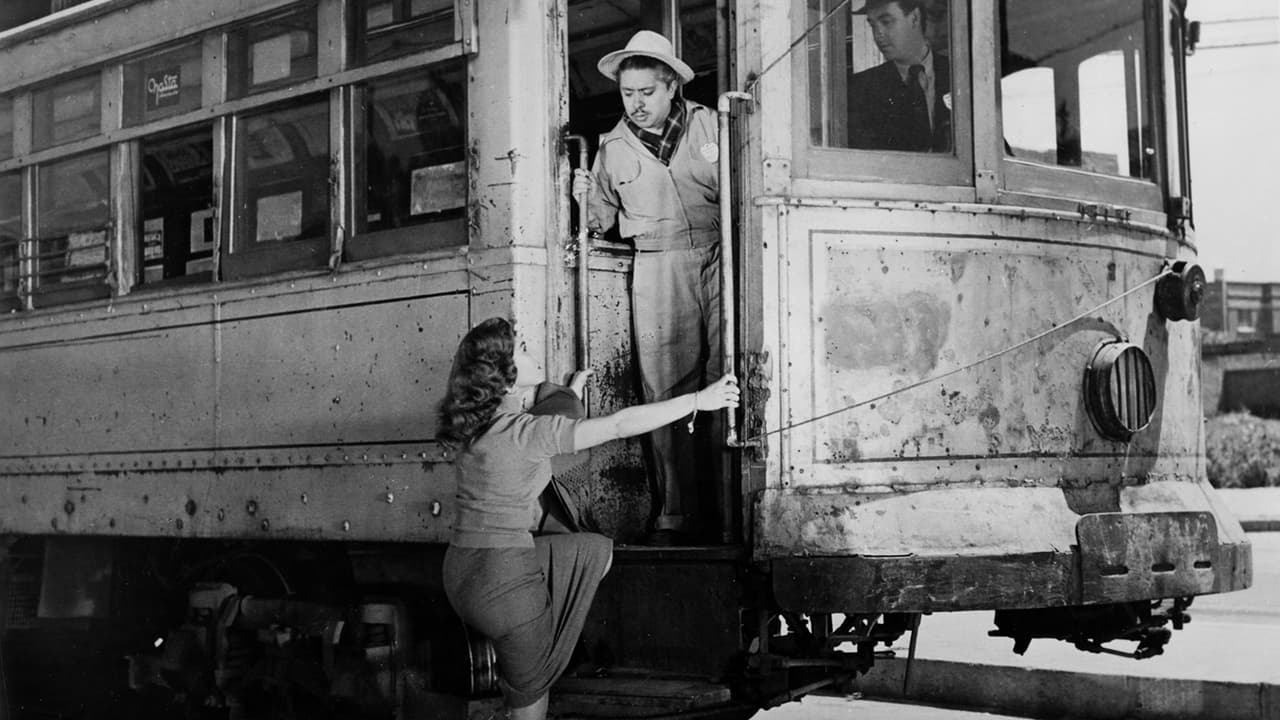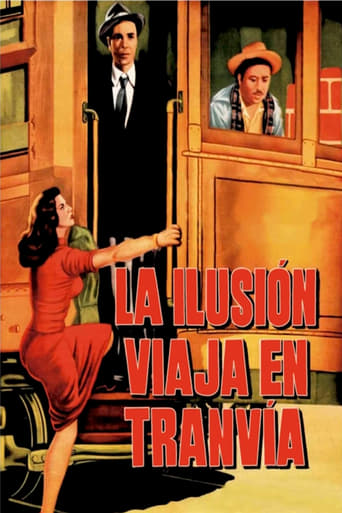



Wonderful character development!
recommended
If the ambition is to provide two hours of instantly forgettable, popcorn-munching escapism, it succeeds.
View MoreBy the time the dramatic fireworks start popping off, each one feels earned.
View MoreOn first viewing – again, as part of that 2007 Bunuel/NFT retrospective – I had found this to be an enjoyable but rather insubstantial comedy; on this revisit, my opinion has not changed about this minor work from the celebrated Spanish director. Indeed, I was surprised to learn (from the opening credits) that Bunuel was not even involved in the screen writing process of this one – although, I do not think it is a coincidence that the film's comic highlight is a wonderful "Garden of Eden" pageant sequence early on (in which the three protagonists playing God, Adam and a swim-suited Eve, are tormented by a heavily-horned Lucifer wearing a shirt sporting the word "serpent"!).The film is fairly similar to Bunuel's earlier (and superior) Mexican 'road movie' ASCENT TO HEAVEN aka Mexican BUS RIDE (1952) in that it is set, for the most part, on a means of public transportation. Besides, its plot line of an ancient vehicle being taken for one last ride before ending up in a scrapheap also harks back to such classic comedies as Harold Lloyd's SPEEDY (1928) and Ealing's practically contemporaneous THE TITFIELD THUNDERBOLT (1953). Incidentally, Bunuel's cinematic idol Fritz Lang, made his own railroad movie that same year: the noir-ish melodrama HUMAN DESIRE (which I own but have yet to watch) – itself a remake of Jean Renoir's LA BETE HUMAINE (1938).As usual with Bunuel's films from this period, it starts with a faux-documentary narration and, in this case, amusingly concludes on a "this was just one of a thousand stories" line a' la Jules Dassin's seminal noir THE NAKED CITY (1948). The director's depiction of the downtrodden Mexican villagers' everyday life (culminating in a riot when the smuggling of corn as fertilizer is accidentally discovered by one of the bumbling protagonists) brought on comparisons with Italy's then-current Neo-realist movement – something which Bunuel readily denied. Indeed, while the story could well have been inspired by a similarly liberating ride through the streets of Paris made by the Surrealist movement in 1931, the truth is that the film was commissioned by a nascent Mexican public transport company to counter the bad press caused by an accident they had had the previous year!Two regular actors from Bunuel's work in Mexico – the lovely Lilia Prado and the amiably rotund Fernando "Mantequilla" Soto (as a streetcar conductor named Tarrajas) – also appear here, alongside Carlos Navarro (as Prado's streetcar mechanic boyfriend) and Agustín Isunza (as Papa Pinillos, a nosy ex-railroad employee). The perennially frustrated attempts of the two company employees to take back the streetcar they stole before its absence is discovered is paralleled by Papa Pinillos' constantly dismissed claims of this very theft to his pompous former employers.Among the commuters who inadvertently get to make use of the runaway streetcar (the film's alternate title) are: a schoolmistress with her classroom of unruly children who are, eventually, stranded on a film set (an orphan in their midst is told that the long-legged starlet being made-up is his long-lost mother!); two elderly ladies carrying a statue of Jesus Christ in "Ecce Homo" guise; a couple of 'penniless' politicians; a clueless American tourist who mistakes the protagonists' reluctance to accept fare – which would have aggravated their misdemeanor – as "Communist" behavior (possibly, former party member Bunuel's barbed comment on the "Red Scare" then currently scourging through Hollywood); and, most memorably, slaughterhouse workers carrying their slabs of meat along as 'luggage'! I cannot forget to mention that, very early on in the film, there is also a throwaway laugh-out-loud moment when a billboard reads: "Well so what?"P.S. Surprisingly enough, the film played without a glitch on my Philips DVD player which, usually, has a lot of trouble dealing with DivX files!
View MoreThe newly born Servicio DE Transportes Eléctricos del D.F. had to do this film to demeaning the bad press caused by "La Venta" accident the previous year, the story and some actors come from Subida al Cielo, and show the company shops at Indianilla neighborhood in México City. Aside from Buñuel intention of a series of sit-coms, his surrealism becomes an every day fact in the Mexican way of life, such anecdotes still happen at STE, now mostly with trolleybuses and the Xochimilco LRV. When we got a VHS copy, we showed it at Tetepilco depot, amusingly the Transportation Dept. boss was also an Ingeniero Benítez, and our efforts to save rolling stock from the torch, have became a nice Traction Museum, without everyone around getting drunk, I'm the Union Historian and had to check it frame by frame to list appearing units: At the opening scene we see several types later succeeded by the first Westram trolley-coaches and a PCC in the Transfer-table, 133 real number was 378, a Brill 11 windows 2-trucker, many points of Mexico City to be checked, for example when they leave the school kids at a filming it was at Calzada de Tlalpan across the gates of CLASA-Films! and the Overhead-repair trolley that block the return to the depot is to be restored at Tetepilco Museum. must add more comments later---
View MoreIn the 50's, in Mexico, the streetcar mechanic Juan Godinez (Carlos Navarro) and the pilot Tarrajas (Fernando Soto) become upset when they are informed by their supervisor that the streetcar number 133 will be decommissioned. They go to a party and late night, they get drunk and decide to borrow the streetcar for one last spin for fun, without charging the passengers. Completely wasted, they sleep in the streetcar and on the next morning, they get in troubled and weird situations while trying to return the vehicle to the garage."La Ilusión Viaja en Tranvía" is a minor movie of Buñuel. This naive comedy presents jokes with religion; criticizes the inflation, the corruption and the tough condition of the poor people in Mexico city; exposes the ridiculous behavior of henchman, represented by the retired Papa Pinillos (Agustín Isunza). Unfortunately, the comedy is not funny, with the exception of the scenes with the villain Papa Pinillos, responsible for the best and funniest moments of the film. My vote is five.Title (Brazil): "A Ilusão Viaja de Bonde" ("The Illusion Travels by Streetcar")
View MoreTo all Buñuel fans that haven't seen this one, let me tell you that the big laugh comes at the end and keeps you laughing for a long time.after the movie is over. Very unusual for Buñuel, but nevertheless very realistic and enjoyable. For the delightful laughing effect he produced at the end, I rated 9.5.
View More